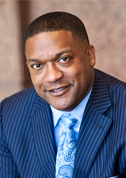© 2014 The Texas Lawbook.
By Kerry Curry
Special Contributing Writer to The Texas Lawbook
(February 25) — To some corporate general counsel, such as AT&T’s Wayne Watts and CenterPoint’s Scott Rozzell, the billable hour is a deplorable beast needing to be slain. Other GCs, such as Stephen Coats at Riverstone Holdings, are okay with the billable hour structure but seek flexibility depending upon outcome.
Fulbright & Jaworski’s 2013 litigation trends survey found that 39 percent of general counsel expect to increase their usage of alternative fee arrangements, but that 87 percent admitted more than 70 percent of their legal buy was still billable hour based.
Even so, a growing number of litigation partners have started their own law firms in recent years to cater to the growing demand for alternative fee agreements. Here are five law firms – Ross Joyner, Schiffer Odom, The Willis Law Group, Skiermont Puckett and Munsch Hardt – that are riding a second wave of this experiment:
Samuel E. Joyner and Steven E. Ross, Ross Joyner PLLC, Dallas
This pair of intellectual property attorneys moved away from Big Law to distinguish themselves in the marketplace from the billable hour model, recognizing inherent conflicts in that model, the two lawyers said. Like Bartlit Beck, their model is to accept only alternative fee arrangements.

“If you are an expert, you should be able to ascribe a value to the product or service you are going to render before the work begins,” Joyner added.
But when a traditional firm wants to increase revenue, it bills more hours, a practice that could encourage a firm to extend a client’s problem rather than solve it quickly.

Ross graduated from law school in 1991 and has been practicing law for more than 20 years. But the firm is new – just one year old – so they admit their alternative fee concept is still largely untested.
“The firms I worked for regularly increased their hourly rates, almost like clockwork,” Ross said. “They also tended to increase the billable hour requirements of their lawyers. First it was on primarily the associates and then later on there were billable hour requirements for the partners as well.”
Law firms, he said, make a big deal of attracting innovative clients — companies with interesting businesses. These law firms like to tout that they are innovative but they rely on an old business model for charging fees, the pair claims.
Because the two lawyers had a clean slate when starting their firm in January 2013, they thought it was a great opportunity to implement alternative fee arrangements, especially as they saw small to midsized firms getting squeezed as Big Law raised hourly rates.
The pair has already done a reverse contingency fee with a client and won a bonus at the end of the case. Part of the case was set on a flat fee and part of the case was set on a reverse contingency in which the firm won a bonus if it was successful in defending the firm and avoiding liability. The bonus was based on the amount of liability the firm avoided for its client.
“They loved that because we had skin in the game and we were confident. We got the bonus.”
Adam P. Schiffer, Schiffer Odom Hicks & Johnson PLLC, Houston
Adam Schiffer began accepting alternative fee arrangements while at Vinson & Elkins in the late 1990s. He gives V&E credit for being an early adopter but he formed his own firm in 2007 for more flexibility without the cumbersome Big Law committee approach to reviewing AFA requests — a practice he believes puts a chilling effect on alternative fee arrangements.
“When you are a small firm, it’s much easier to be nimble and to react to a client’s desire to have an alternative fee arrangement,” he said.
“We are perfectly happy, willing and able to take cases on a contingency fee. We are selective, obviously. You can’t just take any case on a contingency fee given the climate in Texas. And, you have to make sure your work is balanced out so you have fee-paying work so that you can maintain your overhead and pay your people while you are out there trying to swing for the fence,” Schiffer said.
“For me, it’s like having a balanced portfolio. We try to have a certain level of our workload be hourly, then we take a certain percentage of our workload and try to make it contingency.”
Alternative fee arrangements, at any given time, make up 10 to 30 percent of the firm’s business, he said.
Alternative Fee Arrangements by Type
Every fee agreement could potentially be unique. Listed below are some of the most common arrangements cited by Texas lawyers interviewed by The Texas LawBook.
|
Schiffer, a commercial litigator who handles business disputes, believes AFAs can work with any type of case and said he’s worked deals a variety of ways. In some, he’s taken a flat fee up front and a percentage of the recovery at the end.
Sometimes he first takes a case on an hourly basis to see if it can be resolved quickly. If it proceeds to full-blown litigation, the client has the option of switching the case to a percentage contingency fee.
“Another situation I’ve got right now is the other side has offered $25 million to settle a case. I’ve told the client, if they want to, they can stop paying me by the hour and I’ll take a percentage of any recovery above $25 million. So if we never do any better … then I don’t make any fee. They have not accepted that offer by the way. They are continuing to pay me by the hour.”
Schiffer said his firm lets potential clients know that they are willing to consider a variety of payment options. If a large company gives him its larger cases, he’ll charge his normal hourly rate but if they’ll also give him the smaller cases, he’ll charge a flat fee for those, commensurate with a lawyer that handles smaller work. The idea is to win as much business as possible from the client.
“We try to make the fees commensurate to the matter and controversy so the client isn’t overpaying for small work. Likewise, we expect to be made whole when we handle the big stuff,” Schiffer said.
Kirk D. Willis, The Willis Law Group, Dallas
Kirk D. Willis says “trust is paramount” when proposing an alternative fee arrangement. That’s because Willis seeks proprietary information from prospective clients in order to set an appropriate fee.

“The more information, the better of course, but you don’t want to put the client out and ask for too much,” he said.
With information in hand, he comes up with estimated attorney time and expenses and then proposes a fee.
“Typically, there is an agreement that they will send at least 10 if not more of those types of cases in your jurisdiction to your firm and you will do it for that set amount,” Willis said. “What you want to do is create a win-win circumstance where the attorneys are getting enough fees that they are not going in the hole servicing the client, and the client has certitude in knowing how much they will pay in fees.”
Willis recently signed a client using a partial contingency agreement, which he said has been popular.
“They are not paying as much out of pocket immediately and everyone has skin in the game at the end of the litigation. Ours is 20 percent and theirs is 80 percent.”
Attorneys like partial contingency agreements because they don’t have to wait to the very end to get paid. “Clients like it because they don’t have to pay out as much during the case and the attorney has skin in the game to try to win it,” Willis said.
Blended fees — the blending of a partner’s hourly rate with that of an associate’s rate — also have been popular, he said, noting he recently signed a client for that type of fee arrangement as well.
Paul J. Skiermont, Skiermont Puckett LLP, Dallas
Paul Skiermont worked for Bartlit Beck for more than 10 years under the tutelage of Fred Bartlit, his mentor. Skiermont joined the venerable firm after a clerkship and was there until deciding to open up his own firm in 2011.

His firm focuses on patent infringement cases. At the time of this interview, Skiermont had just one billable hour case on the defense side and the remainders were flat fee cases structured with a flat monthly fee that changes based on the phase of the litigation. The fee begins lower at the start of the case and rises during periods of high activity.
“The change in the monthly fee is meant to reflect the activity level of the firm,” he said. The total fee is determined in the fee agreement at the case’s initiation.
Skiermont, however, invoices at a lower monthly rate, usually 80 to 90 percent of the agreed monthly rate. The holdback accumulates during the life of the litigation. The fee agreement defines potential success bonuses for the law firm using the held back amounts toward payment of a bonus. If the client settles the case, the fee agreement might provide that the client pays the held back amount. They never pay the holdback if a defined result isn’t achieved, he said. But the client with a defense victory might pay the holdback funds plus some multiple of the holdback as a bonus.
Skiermont’s firm makes an effort to try to educate clients about alternative fees and often refers them to others who can talk to them about their experiences.
“We definitely prefer to be on the alternative fee because our business model is not leveraging the hours of junior associates,” Skiermont said. “Our profitability is tied to our successes in the cases and our effectiveness.”
Skiermont hopes to eventually convert its few hourly matters to alternative fees but doesn’t feel like — as a two-year-old firm — that it has the luxury of a Bartlit Beck to decline billable hour cases.
“We aspire to be there,” Skiermont said. “We are trying to emulate Fred’s diamond structure of a law firm rather than a pyramid. The scale is different but we are trying to accomplish the same basic idea which is senior people are the ones doing a lot of the work. The bottom of the diamond is the very junior lawyers, then most lawyers are in the five to 10 years of experience and with a few who have more than 10 years of experience at the top of the diamond.”
Irina Plumlee, Munsch Hardt, Austin, Dallas and Houston
Irina Plumlee moved her immigration group to Munsch Hardt in December 2011. One of the reasons for the move was the innovative approach the firm takes to alternative fee arrangements, she said.

Companies both large and small sometimes have to deal with immigration issues, and they all want price stability, Plumlee said. Immigration issues tend to “come up” and often are not accounted for in a company’s budget, lending to greater scrutiny of unplanned costs, she said. Immigration issues may arise when a business decides to bring in a specialist from overseas or transfer someone from a foreign country. But having budgeted for such matters is rare, she said.
Immigration issues are also handled for individuals who always want to know the costs up front, Plumlee said. One of the alternative fee approaches her team uses is a blended approach that combines flat fees and some hourly billing in cases that go outside the norm.
Law firms can easily predict immigration petition filing fees, which makes such cases amenable to flat fees, she said. But it can’t predict if there will be a request for evidence from the government and what amount of work that might entail.
“We have to educate our clients about this on the front end to avoid surprises,” Plumlee said. The firm gets an agreement in advance of representation that allows switching to hourly rates if the case becomes complicated, she said.
“I’ve seen very positive feedback from clients on this overall,” Plumlee said. “Clients do like predictability, but they understand that attorneys can’t always predict what kind of curve ball might be thrown their way and a dollar number can’t always be put upfront on those things.”
© 2014 The Texas Lawbook. Content of The Texas Lawbook is controlled and protected by specific licensing agreements with our subscribers and under federal copyright laws. Any distribution of this content without the consent of The Texas Lawbook is prohibited.
If you see any inaccuracy in any article in The Texas Lawbook, please contact us. Our goal is content that is 100% true and accurate. Thank you.
